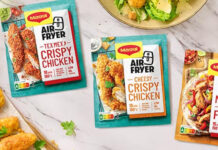UPM Specialty Papers now offers a wide range of packaging papers that are designed for home composting. Six UPM packaging papers are now certified as home compostable, according to the NFT51-800:2015 standard.
These papers are also certified as industrially compostable (EN13432:2000):
Barrier papers such as UPM Prego, UPM Asendo; Coated one side (C1S) papers such as UPM FlexPack, UPM UniquePack, UPM UniquePack Strong; and Specialty kraft papers such as UPM Solide Lucent.
UPM’s fiber-based and recyclable packaging materials empower brand owners and converters to develop home compostable packaging solutions.
“Recycling should always be the first option to consider when possible. However, compostability is a good option when recycling of packaging papers is not possible due to food residues, for example. Compostability can also play a role when recycling infrastructure is limited,” says Susanna Hyrkäs, Senior manager, Sustainability, UPM Specialty Papers.
Compostability is one form of recycling, that is degrading compostable materials into fertile soil suitable for plant growth. The differences between home composting and industrial composting are found in the process temperature and the time it takes before you can expect disintegration and biodegradation to happen. Given the right conditions (20°C – 30°C), home compostable materials are designed to biodegrade within 12 months and disintegrate within 6 months into non-ecotoxic compost.
UPM has set ambitious responsibility targets for 2030, such as promoting a circular economy and sustainable product design. Recyclability and compostability are part of the solution by ensuring a sustainable product end of life. UPM Specialty Papers also offers a wide range of industrial and home compostable label papers.
IndiFoodBev — authentic, impactful and influential
An English-language food and beverage processing and packaging industry B2B platform in print and web, IndiFoodBev is in its third year of publication. It is said that the Indian food and beverage industries represent approximately US$ 900 billion in revenues which implies more than 20% of the country’s GDP. Eliminating the wastage on the farmside can help to deliver more protein to a higher number of the population apart from generating sizable exports. The savings in soil, seeds, water, fertilizer, energy and ultimately food and nutrition could be the most immense contribution that country is poised to make to the moderation of climate change.
To improve your marketing and grow sales to the food and beverage processing and packaging industry, talk to us. Our research and consulting company IppStar [www.ippstar.org] can assess your potential and addressable markets in light of the competition. We can discuss marketing, communication, and sales strategies for market entry and growth.
Suppliers and service providers with a strategy and budget for targeted marketing can discuss using our hybrid print, web, video, and social media channels to create brand recognition linked to market relevance. Our technical writers are ready to meet you and your customers for content.
The second largest producer of fruit and vegetables in the world is continuously expanding processing capacities and delivery systems with appropriate innovative technologies. We cover product and consumer trends, nutrition, processing, research, equipment and packaging from farm to thali. Get our 2025 media kit and recalibrate your role in this dynamic market. Enhance your visibility and relevance to existing markets and turn potential customers into conversations. Ask for a sample copy of our bi-monthly in print or our weekly IndiFoodBev eZine each Wednesday.
For editorial info@ippgroup.in — for advertisement ads1@ippgroup.in and for subscriptions subscription@ippgroup.in
Naresh Khanna – 10 February 2025
Subscribe Now











